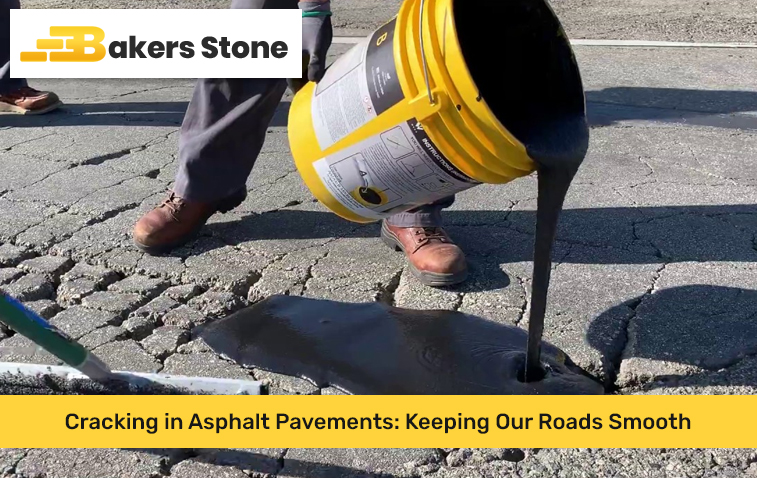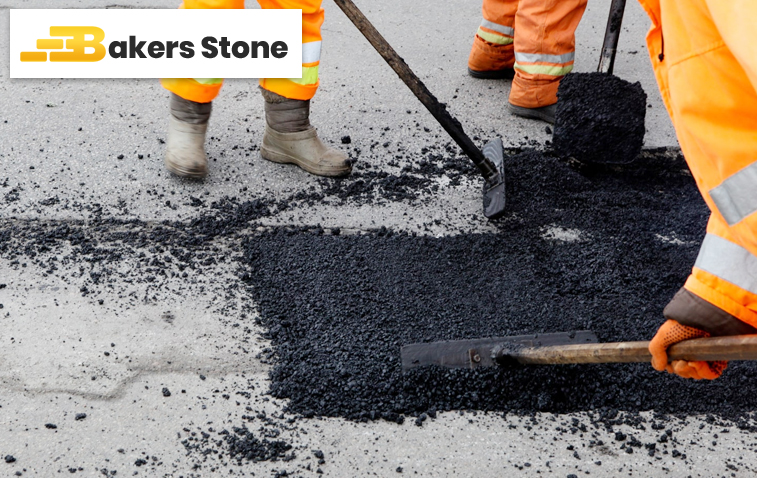Cracking in Asphalt Pavements: Keeping Our Roads Smooth
Roads are made of asphalt, a black, sticky material. Sometimes, these asphalt roads get cracks. We want to understand why this happens and what we can do to fix it. This helps us have smooth and safe roads for a long time. So, let’s explore the world of asphalt cracks and learn how to keep our roads in good shape.

Why Asphalt Cracks Happen
Asphalt roads are strong, but they can crack for different reasons.
- Weather Changes: The weather plays a big part in cracking. When it gets really hot, the asphalt gets soft. Then, when it gets cold, it gets hard and brittle. This change from soft to hard and back again makes the road crack. Also, rain and snow can seep into tiny cracks. Then, when it freezes, the water turns into ice, which takes up more space and pushes the cracks bigger. This process is called freeze-thaw cycle. Thus, weather changes are a big reason for cracks in the roads.
- Heavy Traffic: Big trucks and lots of cars put a lot of weight on the road. This heavy weight pushes down on the asphalt. Over time, all this pushing causes the asphalt to get tired and crack. In addition, constant movement of vehicles causes stress on the road surface. Therefore, heavy traffic is another major cause of cracking.
- Poor Construction: Sometimes, when the road is built, it is not done correctly. If the base layer under the asphalt isn’t strong enough, the asphalt will crack easily. Also, if they don’t use the right type of asphalt, it won’t last long. Moreover, if the asphalt is not laid properly, it can lead to early cracking. Hence, proper construction is very important for road durability.
Different Types of Asphalt Cracks
There are different kinds of cracks that can appear on asphalt roads.
- Alligator Cracks: These cracks look like the skin of an alligator. They are many small, connected cracks. They usually happen because of heavy traffic and weak base layers. Furthermore, they indicate serious problems with the road structure. Thus, alligator cracks need quick attention.
- Transverse Cracks: These cracks go across the road. They usually happen because of temperature changes. As the asphalt gets cold, it shrinks and cracks. Additionally, these cracks can let water into the road base. Therefore, it is important to seal these cracks.
- Longitudinal Cracks: These cracks run along the length of the road. They can happen because of different reasons, like poor construction or settling of the ground underneath. Also, they can be caused by problems with the road’s drainage. Thus, longitudinal cracks need careful inspection.
How We Fix Asphalt Cracks
We can fix asphalt cracks to make the roads smooth again.
- Crack Sealing: For small cracks, we use a special sealant. This sealant fills the cracks and stops water from getting in. Also, it prevents the cracks from getting bigger. Therefore, crack sealing is a good way to protect the road.
- Patching: For bigger cracks or areas with many cracks, we use patching. This means we remove the damaged asphalt and put new asphalt in its place. In addition, this makes the road surface smooth again. Thus, patching is a more extensive repair.
- Overlay: Sometimes, the whole road surface is very cracked. Then, we put a new layer of asphalt over the old one. This is called an overlay. Moreover, this makes the road like new again. Therefore, overlay is a long-term solution.

Keeping Our Roads Strong
Keeping our roads smooth and safe is very important. By understanding why asphalt cracks and how to fix them, we can make our roads last longer. This means smoother bike rides and safer car trips for everyone. In addition, regular checks and quick repairs help prevent bigger problems. Therefore, we should take care of our roads.
FAQs
Alligator cracking worsens with continued heavy traffic and water entering the cracks. The repeated heavy loads from vehicles cause the cracks to spread and deepen. Also, when water seeps into these cracks, it weakens the base layer of the road. This weakening leads to further deterioration of the asphalt surface. Furthermore, during freeze-thaw cycles, the trapped water expands and contracts, exacerbating the cracking.
Temperature changes significantly affect transverse cracking in asphalt pavements. As the temperature drops, the asphalt contracts or shrinks. This contraction creates tensile stresses within the asphalt layer. When these stresses exceed the asphalt’s tensile strength, cracks form perpendicular to the road’s centerline. Additionally, the colder the temperature, the more significant the contraction and the wider the cracks can become.
Longitudinal cracks can be challenging to prevent due to various underlying factors. These factors include settlement of the underlying soil or base layers, which creates stress on the asphalt surface. Also, poorly constructed joints between paving lanes can create weak points susceptible to cracking. Furthermore, reflective cracking from cracks in underlying layers can propagate upwards to the surface.
Crack sealing plays a vital role in extending the life of asphalt pavements. By filling cracks with a sealant, it prevents water from penetrating into the underlying base and subgrade layers. This prevents weakening of these layers. Also, it stops the cracks from widening due to freeze-thaw cycles. Moreover, it creates a barrier against debris and other materials that can further damage the pavement.
Patching becomes the best solution when the asphalt has significant damage, such as large cracks, potholes, or areas with extensive alligator cracking. It involves removing the damaged asphalt and replacing it with new material. This restores the structural integrity and smoothness of the road surface. Additionally, patching provides a more durable repair than crack sealing for severe damage.
An asphalt overlay provides numerous benefits for severely distressed pavements. It involves placing a new layer of asphalt over the existing surface. This creates a smooth, uniform riding surface. Also, it strengthens the pavement structure and extends its service life. Moreover, an overlay can correct minor surface irregularities and improve drainage.
